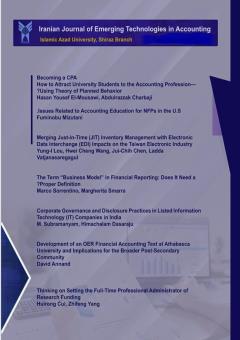Reasons for Dysfunctional Audit Behavior in Implementing Business Processes
الموضوعات : • Emerging technology in the field of Accounting and its future
1 - Department: Economics and Administrative Sciences, Ferdowsi University of Mashhad, Mashhad, Iran
الکلمات المفتاحية: Business Process, Design and Modeling, Execution and Implementation, Control and Governance, Dysfunctional Audit Behavior,
ملخص المقالة :
Objective: This study addresses the impact of the Business Process Cycle (BPC hereafter) (including design and modeling, execution and implementation, control and governance, analysis and optimization) on risk management and auditor professional judgment to achieve economic efficiency. Therefore, the audit's reputation will be boosted. Also, this study ascertains why auditors do not implement Business processes (BP) at functional processes. Methodology: The study’s statistical population includes all the incumbent auditors, and 197 questionnaires have been collected over three months. Smart Pls is used for hypotheses test results. Results: Results revealed a positive and significant relationship between dysfunctional audit behavior and each component of BP, including design and modeling, execution and implementation, control and governance, analysis, and optimization. Innovation: Due to the growing competition in the market, precious human resources are among companies' competitive advantages. Hence, managers can considerably advance their employees’ knowledge and assemble more cooperative teams in audit projects by investing in educational courses. Senior managers’ support is necessary for expanding the capabilities and determining the culture. This research is the first study to address the impact of dysfunctional audit behavior (with eight components) on BP (with four components).


